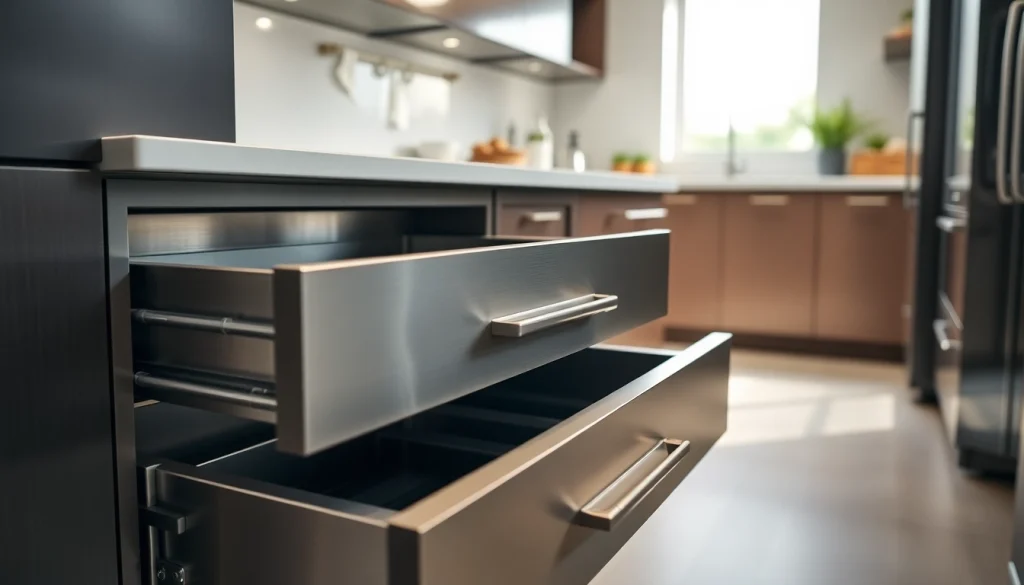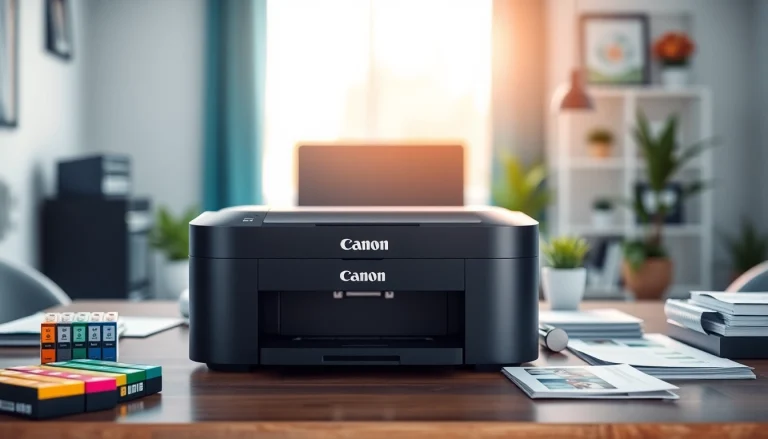
1. Understanding Metal Drawer Systems
1.1 What is a Metal Drawer System?
A Metal Drawer System is a meticulously engineered storage solution primarily designed for cabinets and furniture in both residential and commercial settings. These systems are constructed from various durable metals, commonly steel or aluminum, which offer numerous advantages over traditional wooden drawer systems. The metal design typically includes sides, backs, and bottoms that provide structural integrity while also allowing for ease of use and access to stored items.
1.2 Key Features of Metal Drawer Systems
Metal drawer systems come with several distinctive features that set them apart from their wooden counterparts:
- Robust Construction: Metal drawers are known for their strength, allowing them to hold heavier items without deformation over time.
- Sleek Aesthetics: With clean lines and a modern look, metal drawers often complement contemporary interior designs.
- Ball-Bearing Slides: Many metal drawer systems utilize ball-bearing slides, which provide smooth opening and closing actions, reducing wear and tear.
- Versatility: These systems can adapt to various sizes and shapes of drawers, making them suitable for numerous applications.
- Easy Maintenance: Metal drawers are often easier to clean and maintain than wooden alternatives, as they are less susceptible to stains or warping.
1.3 Common Applications for Metal Drawer Systems
Metal drawer systems are highly versatile and can be utilized in multiple settings:
- Residential Use: Ideal for kitchens, bathrooms, and bedrooms, providing functional storage solutions.
- Commercial Spaces: Commonly used in offices, workshops, and retail environments for organizing tools, documents, and merchandise.
- Industrial Applications: Heavy-duty metal drawers can withstand significant weight and are favored in warehouses and manufacturing facilities.
- Furniture Design: Designers often incorporate metal drawer systems into custom cabinetry to enhance durability and aesthetics.
2. Benefits of Using Metal Drawer Systems
2.1 Durability and Longevity
One of the primary advantages of metal drawer systems is their exceptional durability. Unlike wooden drawers, which are prone to scratches, dents, and moisture-related damage, metal components maintain their form and functionality over the years. High-quality finishes, such as powder coating, further enhance their resistance to wear and corrosion, making them suitable for both dry and humid environments.
2.2 Increased Storage Efficiency
Metal drawer systems maximize storage efficiency by optimizing the use of space. They allow for higher weight capacities and can accommodate larger items without compromising stability. Additionally, metal drawers can be designed to fit unconventional spaces, such as narrow cabinets or custom installations, enabling users to organize their belongings more effectively.
2.3 Aesthetic Versatility in Design
Today’s consumer is increasingly discerning about aesthetics, and metal drawer systems deliver on this demand. Available in various colors, finishes, and styles, they can easily fit into different design themes, whether modern, industrial, or minimalist. This versatility allows homeowners and designers alike to create cohesive and stylish interiors that do not compromise functionality for beauty.
3. Types of Metal Drawer Systems Available
3.1 Ball-Bearing Drawer Slides
Ball-bearing drawer slides are one of the most widely used mechanisms in metal drawer systems. Their design incorporates small steel balls that reduce friction during operation, allowing for smooth and silent opening and closing. They can support significant weight, making them particularly effective in kitchens and workshops.
3.2 Undermount and Side-Mount Options
Metal drawer systems typically come in two styles: undermount and side-mount. Undermount slides are concealed beneath the drawer, providing a clean aesthetic and enabling full access to the drawer’s contents. On the other hand, side-mount slides are visible on the sides of the drawer box but are more accessible for maintenance and adjustment. Each mounting style has unique benefits, making them suitable for varying design preferences and functional requirements.
3.3 Specialty Drawer Systems
Specialty drawer systems, such as those designed for specific applications (file drawers or tool boxes), cater to niche needs. For example, filing cabinets may utilize metal drawer systems that accommodate large amounts of paper without sagging. Meanwhile, tool drawers feature structural reinforcements to handle the weight of heavy tools and equipment.
4. Installation and Maintenance of Metal Drawer Systems
4.1 Installation Tips and Best Practices
Installing metal drawer systems can be straightforward if you follow best practices. Begin by ensuring all components are included and that you have the right tools, such as a drill, screwdriver, and level. Follow these tips for a successful installation:
- Before installation, verify that the drawer box dimensions match the slide specifications to ensure compatibility.
- Use a level to ensure that slides are mounted straight, preventing issues with drawer alignment and operation.
- Pre-drill holes for screws to avoid splitting the wood if you’re attaching metal slides to wooden frames.
- Follow manufacturer instructions carefully to understand specific requirements for the metal drawer systems you’re installing.
4.2 Regular Maintenance for Optimal Performance
To ensure the longevity and optimal performance of metal drawer systems, regular maintenance is essential. This includes:
- Cleaning the exterior and interior of drawers with a damp cloth to remove dust and grime.
- Checking and tightening screws on the slides every few months to maintain stability.
- Lubricating the slides with a silicone-based lubricant to ensure smooth operation.
4.3 Troubleshooting Common Issues
Even with proper maintenance, users may encounter common issues with metal drawer systems. Here are some troubleshooting tips:
- Drawer Sticking: Inspect the slides for dirt or obstructions. Clean them thoroughly, and if the problem persists, consider lubricating with silicone spray.
- Misaligned Drawers: Check the mounting brackets and tracks are correctly installed. Loosen screws if necessary, realign, and re-tighten.
- Overloading: Ensure that the weight in the drawer does not exceed the manufacturer’s recommended limit, which could lead to damage.
5. Selecting the Right Metal Drawer System for Your Needs
5.1 Assessing Your Storage Requirements
Choosing the right metal drawer system begins with assessing your storage needs. Consider factors such as the items you intend to store, the frequency of use, and available space. Determine whether you need full-extension slides for easy access or extra stability for heavy items.
5.2 Comparing Brands and Models
With a plethora of brands and models available, researching and comparing options is vital. Look for reputable manufacturers known for quality craftsmanship and customer service. Read reviews to gauge user satisfaction and consider direct comparisons based on features, weight capacity, and pricing.
5.3 Budget Considerations and Value for Money
Finally, establishing a budget is crucial when selecting a metal drawer system. While investing in high-quality products may require a higher initial cost, they often prove more economically efficient in the long term due to their durability and lower maintenance requirements. Evaluate the cost against the benefits provided to ensure you receive the best value for your investment.




